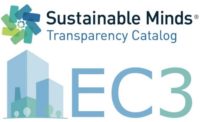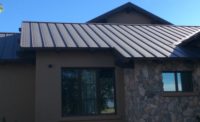Installing Environmental Mindfulness with Sustainable Roofing

In a world increasingly aware of its impact on the environment, leaders in the architectural, building, and construction industries are embracing the idea of sustainability with regards to product development, design and construction techniques, building performance and maintenance, and adherence to nationally recognized programs and rating systems. The U.S. Green Building Council’s Leadership in Energy and Environmental Design (LEED) program and Green Globes, a building environmental design and management tool developed by ECD Energy, are two of the major accreditation programs.
Sustainable Building: Meeting More Than Energy Goals
While sustainable building programs generally focus on maximizing energy efficiency, architects and builders should consider the impact of product design throughout a building’s lifecycle. This includes considering issues such as productivity gains, lifecycle cost savings, maintenance expenses, adaptive reuse, destruction and recycling, and overall environmental soundness. The U.S. Environmental Protection Agency (EPA) has specified that the common objective is that “sustainable or ‘green’ buildings are designed to reduce the overall impact of the built environment on human health and the natural environment by efficiently using energy, water, and other resources, protecting occupant health, improving employee productivity, and reducing waste, pollution, and environmental degradation.”
A Tricky Task: Defining Sustainable Roofing
The practice of sustainable roofing furthers this growing trend as part of the green building process. However, defining the practice isn’t easy. Determining what makes a sustainable roof can be subjective. Definitions are often written to suit a company’s marketing plans. But in support of the concept that sustainability is a symbiotic co-existence between humans and the environment, we can define sustainable roofing—and sustainable roofs—using these five criteria:
1. Energy Use and Energy Production
Sustainable roofs are designed and built to conserve energy. By using high performance, energy-efficient materials to properly insulate a roofing system, the potential energy savings of a sustainable roof can be substantial, decreasing the building’s carbon footprint, and saving energy operational costs. Lifecycle cost savings can offset or exceed initial installation investments.
From a design perspective, daylight harvesting can be provided by a sustainable roof via skylights, which can also add to the building’s aesthetic appeal while reducing energy bills.
Some sustainable roofs can offset costs by producing energy. Solar energy systems, such as roof-mounted solar panels or tubes, can be incorporated into a new roof’s design (or an existing roof’s retrofit) to supplement or solely provide the building’s power needs.
2. Water Reclaiming and Repurposing
Many sustainable roofs perform an essential role of capturing and repurposing rooftop storm water. Not only does this reduce pollution that seeps into waterways and sewer systems, but reclaimed roof water can also be used for landscaping and other building-related needs, reducing demand on municipal water systems.
3. Use of Recyclable Materials
Excess materials from roofing projects add millions of tons to solid waste generated annually in the U.S. Improved use and reuse of roofing materials offers builders an opportunity to reduce landfill waste across the country. Many roofing material manufacturers are adding partially and fully recyclable products to their lines to meet these goals.
4. Lengthening Service Life and Minimizing Environmental Impact
Designing a roof for durability and adaptability can maximize its longevity, thus promoting sustainability. Specifying long-lasting materials to prevent premature deterioration of the structure can increase time before demolition and disposal of building waste.
Because minimizing environmental impact is also a key principle of sustainable roofing, some newer roofing systems feature pre-fabricated components that result in reduced material waste by installers. Therefore, job sites stay cleaner, saving dumpsters and landfills from unnecessary extra waste.
5. Participating In Green Building Programs
The LEED program and the Green Globes initiative, two established and respected programs that govern high-performance building design, are important players in qualifying and quantifying sustainable roofing. The credits a sustainable roof can gain help the building obtain LEED certification. Both programs recognize the installation of high performance roofing systems. Manufacturers of green roofs are also recognized by the EPA’s ENERGY STARRoof Products Program and the Cool Roof Rating Council (CRRC).
Sustainable Roofing Today Means a Better Environment Tomorrow
Adopting sustainable building practices helps minimize the negative effects of construction and building operations so that a more positive, environmentally friendly outcome can be realized. As a part of an overall green building movement, sustainable roofing is a practice worth performing.
Visit Atlas Roofing Corporation for more information about sustainable roofing products.
Looking for a reprint of this article?
From high-res PDFs to custom plaques, order your copy today!






